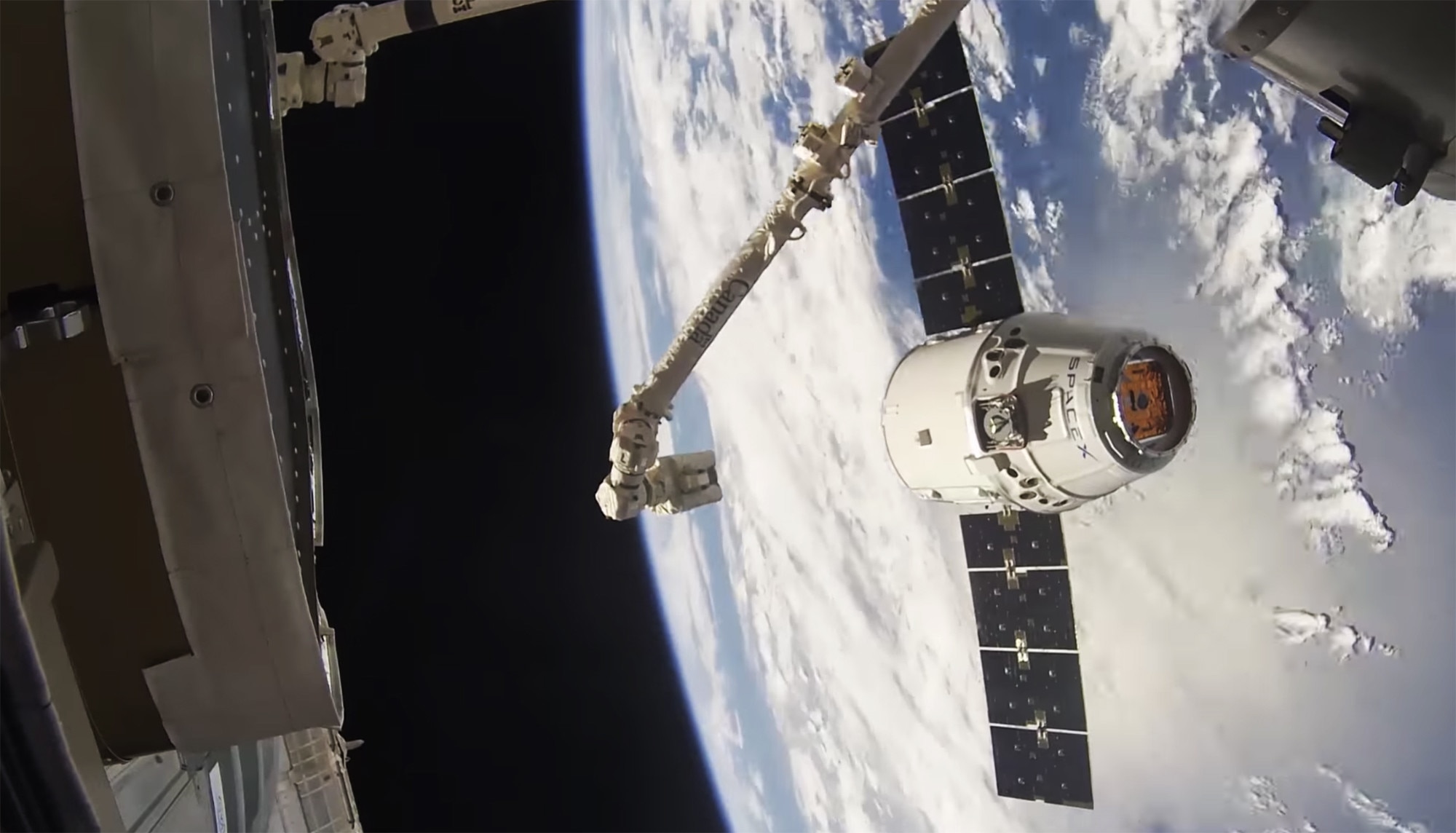Create a free profile to get unlimited access to exclusive videos, sweepstakes, and more!
Two videos, two rocket ships

You want rocket ship videos? I got rocket ship videos.
And you know what? I like writing rocket ship. Because I don't mean rocket, like the Falcon 9 or the Atlas V or whatever. Those are extremely cool, don't get me wrong. But rocket ship evokes an image, a romance, a throwback to the sleek Chesley Bonestell silver finned darts sitting on a rugged lunar landscape.
And I'm OK with that, because yeah, these are rocket ships.
First up: A time-lapse video of the future happening now, as the SpaceX Dragon capsule that launched on April 2, 2018 makes a rendezvous with the International Space Station:
Oh how I love this! The Dragon, solar wings extended, approaches ISS slowly even as the two circle the Earth 400 km below, moving at 8,000 meters per second. That velocity is only apparent as the Earth rolls in the background, not as the Dragon flies near.
The capsule appears to rock and sway a bit as its attitude control system correct its orientation and motion, but that stops when the Canadarm2 reaches out and plucks it out of the sky.
Ironically, two become one at the moment of berth.
The Dragon took nearly three tons of supplies to ISS and will return to our planet in May, loaded with more than 1.5 tons of equipment from previous work in space. NASA has more info on all that.
Speaking of back on Earth…
Virgin Galactic is a different space company than SpaceX. Rather than trying to get into orbit — which takes a lot of energy, and therefore big rockets — they're aiming for suborbital space: essentially straight up and straight down.
Oh, but it's much more than that. A mothership airplane will take off conventionally, with a rocketplane stowed underneath. Once high enough (about 15 km), the airplane disengages… and SpaceShipTwo, the VSS Unity, fires up its rocket engine and blasts away into the sky.
That's the plan, at least. They're still testing Unity, and it's undergone several gliding flights (just drop tests with no engine burn), but on April 5, 2018 it underwent its first powered flight.
Watch as VG pilots David Mackay and Mark Stuckey light her up:
Oh, yeah. I have got to see one of these live sometime.
Unity rose to an altitude of over 25 kilometers in this powered test, then glided back to the ground. The generally accepted "edge of space" (called the Kármán line) is 100 km up, and that height will be achieved soon.
It won't be the first time for them, though. SpaceShipOne achieved this goal in 2004. The first SpaceShipTwo had its first powered flight in 2013, but then suffered a catastrophic failure in 2014 that killed one pilot and injured the other. A new one was built, and Unity rolled out in 2016.
Virgin Galactic hasn't said exactly when it will break the Kármán line but they did say they'll be ready to take passengers (at $250,000 a pop!) into space in a few months, and that they'll also soon be able to place small satellites in space with their LauncherOne rocket (which is dropped in the air by a 747-400 jet).
This is very exciting! A lot of people have been waiting a very long time to step on board a VG rocketplane and head into space. It'll open a new era in space exploration (and science, which actually is a rich arena here even though Unity will only be in freefall for three to four minutes).
I don't know if space is the final frontier, but we've been standing on the edge of it for a long time. It's time to dive in.
Tip o' the spacesuit helmet to Loretta Hidalgo Whitesides, who also happens to be a founder astronaut with VG.


























